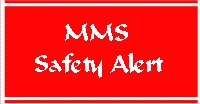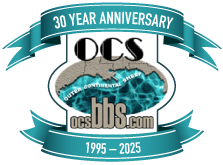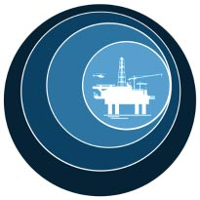Drillship Draw Works Failure
Effective Date: 12/2/2000
 | Minerals Management Service Gulf of Mexico OCS Region |
Safety Alert No. 191
Contact: Joe Gordon
December 7, 2000
504-736-3249
Drillship Draw Works Failure
A deepwater drillship recently encountered a problem that resulted in the loss of 20 joints of marine riser, the lower marine riser package, and the subsea blowout preventer stack. During the running of the riser assembly and in preparation of trimming the vessel to allow the passage of the floatation riser through the drill floor, the driller set the draw works brakes. The brakes failed, allowing the traveling block to fall and strike the drill floor. The impact of the traveling block striking the drill floor caused the top drive to separate, allowing the riser running tools and riser assembly to fall to the seafloor.
The MMS investigation into this incident revealed that the brake failure was the result of (1) an excessive air gap between the draw works brake pads and the brake rotors, and (2) contamination of the draw works brake pads and rotors by the drill line lubricant. The investigation further revealed (1) an unexplained change in the brake inspection procedures, and (2) that a job hazards analysis was not conducted for the subject operation.
It is therefore recommended that drilling contractors conduct a hazards analysis of the operation and maintenance of their draw works system. The purpose of the analysis should be to identify potential failures within the total draw works system. Once the potential failures are identified, steps should be taken either to eliminate the failure or to minimize the consequences of such failures should they occur. These steps can be accomplished through engineering and/or administrative/procedural practices. The drilling contractors should verify the adherence of their operation and maintenance programs of their individual draw works systems to those of the system manufacturer. Issues to be considered during the above-referenced analysis include, but are not limited to, the following:
- The detection, remediation, and prevention of contamination of the braking surfaces;
- Inspection and maintenance of braking system to include maximum allowable pad/disc tolerances and proper adjustment when necessary;
- Manufacturers’ recommendations are completely reviewed and addressed;
- Procedures or guidelines for handling loads at or near the load capacity of the draw works; and
- Managing changes within the operation and maintenance program to ensure all potential hazards of the changes are identified, reviewed, and addressed.
–GOMR–MMS–
Visit our Safety Information Website:
http://www.gomr.boemre.gov/homepg/offshore/safety/safety.html






